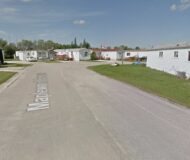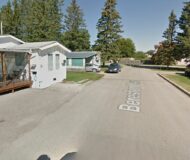Investing in Mobile Home Parks
General Overview
The mobile home park is an industry that is not overly visible and seems to be somewhat uncommon as part of one’s investment portfolio. Don’t let this fool you since I have come to learn that major corporations and wealthy individuals are now buying as many of these parks as possible. It is no longer the ‘mom and pop’ type of business. It has many advantages and the following information will explain some of them to you.
My Beginning
When I first began selling real estate 25 years ago and knew very little about this product. It was only when a client asked me to find him a mobile home park to purchase that I learned just how difficult it was to find one. Not only was it physically difficult to locate one but to actually find out who owned it and then to see if they would actually consider selling. It was then that I decided to immerse myself into understanding the mobile home park business and make it my specialty. Over the past 20+ years I have sold many parks and become very familiar with them.
I have a website dedicated to mobile home parks and you can see my current inventory and history of activity at: www.mobileparks.com.
History
You may remember these parks from 30 or more years ago as being referred to as trailer parks but then they progress to mobile home parks and now more commonly are referred to as manufactured homes or housing communities. The quality of construction of these homes are now of superior quality as they are built in indoor temperature controlled environments and government inspections. The size of homes has also greatly increased from the original 1970’s 12’ x 56’ trailer to currently 16’ x 76’ (possibly larger) or even double wide homes of (24’ x 60’).
Major points to consider when buying a mobile home park
Location
Location may be the primary way of determining both short term and long term value. If in a well located area the land value alone is always a good investment even if the cash flow from the rental income were to completely stop. This would not be the only reason for buying a park but certainly must be considered. A park located in an area where employment is strong will most certainly guarantee it will most always be fully occupied.
Services
Another consideration is the service of utilities to the park which is also closely related to location. Most preferred is one that has full city services such as city water and sewer along with garbage pickup, hydro and cable TV. These can be more expensive at the outset but translate into easier management and upkeep. That said, it is good to also consider ‘non city serviced parks’ as there are many. These parks may be serviced by their own water wells, septic systems, lagoons, or onsite sewage treatment plants. If regularly maintained these can all function very efficiently and possibly at lower costs.
Condition
When evaluating a mobile home park, the overall condition and often ‘first impression’ is important. Some properties show the immediate ‘pride of ownership’ while others are neglected and in much need of repair & maintenance. That said, both parks though different in appearance can provide the same returns at the outset. However, over time the neglected one will have need of much more cost in repairs if not regularly maintained.
Size of Parks
Parks come in many sizes in terms of land base and numbers of rentable pads. They can be less than 10 pads or as much as 200 or more. In general, many parks are in the 30 to 60 pad range. A rule of thumb, any park with a minimum of 30 pads can afford to have an onsite manager. The manager is usually paid by way of free monthly pad rent in exchange for general management duties.
Pricing
How does one determine the correct price to pay for this type of investment? The most common method of determining value is by using a Cap Rate / Rate of Return / Yield. This is calculated using a simple formula: Cap Rate = NOI (net operating income)/Price. Each market area will have a cap rate that determines if it is correctly priced. For example: A park in or near a major city will generate cap rates in the 5%-6.5% range. Some more remote areas or small-town parks may offer a 7% to 9% return. As with any investment it is based on ‘risk and reward’. One key factor to research is the historical vacancy rate which will confirm the stability of ongoing cash flow for debt service and profitability. Another safeguard as with any commercial purchase is an appraisal prepared by an accredited firm familiar with mobile home parks. In most cases all lenders will require an appraisal prior to providing the funds to complete the purchase. Lenders will in most cases require a Phase 1 environmental audit to confirm the land and surrounding lands are not contaminated from any current or prior environmentally unfriendly activities.
Financing
Financing mobile home parks in the past was somewhat challenging since most lenders only understood them as being very low-end housing. This has dramatically changed in the past 10 years with the industry becoming more visible through marketing efforts and realizing an opportunity for homeowners to live in safe, comfortable communities but at a much lower cost than purchasing a single-family home. Most lenders will still expect the Buyer to put his own cash of 35% to 40% and they provide the balance required to complete the purchase. As you are all aware interest rates are continually changing. For many years they were very low so it was an ideal time to borrow funds to invest in this type of opportunity, and banks liked this asset class as they could see the debt serviceability because of the steady cash flow.
This has changed somewhat with the higher interest rates which is making a serious change in the market, both for the Buyer and the Sellers expectations. As a result, many buyers are now asking for a (VTB) Vendor Take Back. The Buyer still wants to buy the mobile home park but needs help from the current owner by carrying a portion of the purchase price as a 2’nd mortgage. Sellers are starting to warm up to this idea in order to make the park more saleable.
Rent Increases
British Columbia has rent controls as do most provinces. Alberta does not have rent controls. For example, in BC parks have had allowable rent increases of 2.9%, 4.3%, 3.8%, 2.2%, 2.5%, 2.95 and in 2024 3.5%, as published annually by the Tenancy Branch each year. It is wise to give the allowable rent increase each year because you can’t make it up at a future date. These rent increases not only increase your net income but also add value and will serve you well when it comes time to sell.
Additional Profit Centers
- Expansion – if a park has additional land that is zoned correctly, a contractor can develop it by installing all the underground services making it ready to accommodate more rental pads. (6 or 7 pads per acre.)
- Place & Sell –This has become popular of late due to its profitability. Buy a new/used home at wholesale value and sell at retail. For new homes this can be about $25,000-$40,000 per home.
- VTB – Alternately you can have the owner/tenant pay a nominal down payment and then hold the mortgage on the remaining balance and get paid out over, say 4 years at 10% interest. These terms are not uncommon. This guarantees you a good return on your Seller financing and a tenant that won’t leave after having invested in his own home for months or years and also steady pad rental income.
- Place & Rent- you can also place a home, fully skirted and with all hookups and rent the home for about 2 or 3 times the monthly pad rent.
- Amenities – you can also have additional amenities such as a meeting hall, a pool, laundromat, additional RV parking and charge rent for all these additional services.
Replacement Cost vs: Existing Park (Zoning)
I have learned that it is more cost effective and much quicker to purchase an existing operational park than constructing a new one. Firstly, to obtain land that will be granted zoning for this purpose will be most challenging. Most municipalities are not yet receptive to rezoning land for this type of use. This could be due to receiving higher tax revenues from single family or multi-family subdivisions. The cost of developing every new pad is somewhere in the range of $40,000 to $70,000 per pad, consequently a 50-pad park would require at least $2,500,000 in development costs, excluding the land cost. You must also build in the cost of borrowing during construction and all the way to when the park is fully occupied. This could be 1 to 4 years. Due to these facts the existing parks are much more appealing. You benefit from immediate cash flow as of takeover day.
Future Redevelopment
You can consider the possibility of your park being rezoned for redevelopment at a future date. This has become popular with old parks built in town centers that now have land values far in excess of the cash flow value. Years ago, the main income was from pad rents where now the value is in building a commercial strip mall or multi-family homes. This has its challenges but also has huge financial gains if successfully brought to completion.
Management
This is where this type of investment gets appealing. You can get offsite professional management but most often parks are managed by an individual or a couple living in the park who can oversee most all aspects of management. In exchange for management their pay is usually free pad rent and depending on the size of the park they may also receive an additional monthly salary. They will look after common area grounds maintenance, grass cutting, collecting and depositing rents, taking regular water samples where necessary, giving necessary rent increase notices or evictions when needed and general maintenance of roads, lights, wells, and the like.
Affordable Housing
The ability to own our own home is no longer ‘given’ but becoming a real privilege. Owning a manufactured home in a community of homes is quickly becoming a serious option for many. It’s only a fraction of the cost of a stick-built home in a subdivision, even with the added monthly cost of pad rent. (monthly cost for privilege of living on someone’s land with some utility services included)
Park Rules & Regulations
Each park has its own Rules and Regulations which each tenant signs and agrees to adhere to upon being accepted as a tenant. The manager is to enforce these rules in order to maintain order and cleanliness within the park. If rules are not adhered to the Rules & Regulations will clearly spell out the various remedies available to the Landlord. See (Sec 32 (4) Manufactured Home Park Tenancy Act).
https://www.leg.bc.ca/parliamentary-business/legislation-debates-proceedings/42nd-parliament/1st-session/bills/first-reading/gov07-1



